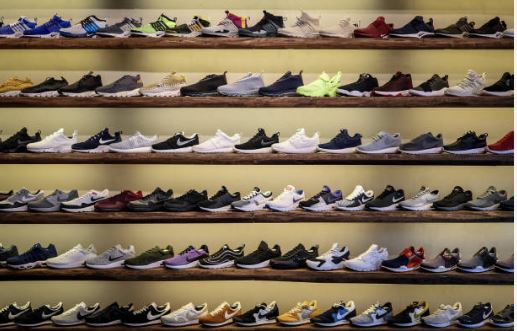Nike V. Stockx: An Analysis Of The Trademark Infringement In The Metaverse
The Metaverse is a concept first introduced by Neal Stephenson in his science-fiction novel Snow Crash. It is a 3D world that combines various virtual spaces. In addition to supporting gaming and social media, the Metaverse combines sectors of the economy, digital identity, decentralized democratic accountability, and other applications. Even presently, user creation and ownership of valuable assets and currencies contribute to developing a unified metaverse, which includes VR Technology, Augmented Reality, virtual currencies, NFTs, and other similar technologies. Global interest in the Metaverse has increased drastically due to the virtual world’s potential for creating intensely immersive and engaging experiences.
[Image source:Gettyimage]
The Metaverse comprises various technologies, each with its own IPR implications. Artists are using virtual reality and augmented reality to create previously unimagined artworks. These artists’ works are undeniably unique and would be entitled to appropriate IP protection. Furthermore, some aspects of the Metaverse have already been integrated into the business domain. Many shopping, clothing, and accessories websites use augmented reality (AR), allowing customers to try on products in real-time without possessing them physically. Additionally, with the new frontier’s growing popularity, businesses are looking for ways to make a profit. Consequently, trademark infringement is becoming a concern in this new world.
One of the first significant legal disputes in the virtual world was when Nike sued StockX in February, claiming that the sneaker resale marketplace had used Nike’s trademarked logos and goods to enter the NFT market. In contrast to other marketplaces, StockX is a street fashion reseller that also serves as a middleman and authenticates products for its customers. The Vault NFT collection, which StockX claims is linked to verified physical goods, is a recent addition to the company’s authentication service.
LEGAL ISSUE
The main contention of the case is whether StockX’s NFTs are sufficient proof of physical or virtual products in their own right.
A. NIKE’S CONTENTION:
i. Trademark infringement without prior consent:
As per the initial complaint, filed in a “District Court in New York,” StockX is issuing, advertising, and selling NFTs bearing Nike’s trademarks at high prices without Nike’s approval or authorization. Nike claims that the method adopted by StockX to use Nike’s famous marks such as the “swoosh” and the “jump man” logo constitutes, among other things, trademark infringement, false designation of origin, and trademark dilution.
ii. StockX is creating NFTs to capitalize on Nike’s goodwill and reputation:
Nike claims that Nike-branded NFTs produced by StockX are actual virtual items, as opposed to just representing ownership of actual Nike footwear. Nike asserts that StockX is issuing additional NFTs to capitalize on Nike’s name and goodwill in the streetwear industry rather than offering a fresh and effective way to transact goods. Although StockX advertises that its customers can redeem an NFT in exchange for physical product possession as evidence that their NFTs only serves as proof of ownership, it was argued that this redemption option is currently unavailable to the customers. There is no indication of when, if ever, such a service will be available.
iii. Avoid brand confusion between Nike and other competitors:
Nike plans to merge blockchain technology and streetwear culture and fashion. Nike hopes to minimize brand confusion as it just acquired RTFKT Studios, a digital art and collectable creative firm involved in the development of NFTs. As a result of this new acquisition, Nike has issued NFTs via RTFKT, including collectable digital shoes.
iv. StockX can use NFTS to independently verify sneakers when it cannot even tell the difference between real and fake:
Companies can use NFTs to combat counterfeiting as the blockchain code underlying NFTs cannot be replicated. An example is StockX’s Vault NFT program. StockX claims to use a proprietary, multi-step verification system for every item its platform sells, including physical Nike sneakers. In response, Nike made test purchases from StockX and discovered that at least four pairs of shoes claimed to be authentic by StockX were, in fact, counterfeit. However, the tangible product must also be genuine for an NFT program to combat counterfeiting effectively.
B. STOCKX’S CONTENTION:
i. NFTs are used in tracking ownership of physical Nike products sold on StockX, which are held in StockX’s custody:
In disputing that its NFTs are virtual products, StockX points to its redemption process, which allows an owner to redeem NFTs at any time in exchange for physical shoe delivery. Notably, this novel method of tracking ownership makes the resale process more structured and viable. Instead of shipping the product itself, which is regularly traded in the market among consumers after each sale, users can easily sell and transfer an NFT.
ii. Nike’s “newly found litigation position” is “suspicious at best”:
Nike’s claim that StockX is a bad actor who purposefully deals in counterfeit goods and misleads its customers is contradicted by the facts and by Nike’s own interactions with StockX. Nike endorsed StockX’s authentication procedure, with Nike’s director of brand protection describing the two businesses as being aligned on ensuring consumers only received genuine products in 2020. Nike’s vice president of global litigation and investigations praised StockX as a “good actor” in connection with efforts to remove a counterfeit listing. Nike itself had taken the initiative to work with StockX primarily due to its faith in the verification process of StockX. Nike had also welcomed StockX to participate in an anti-counterfeiting council with the “US Department of Homeland Security.”
iii. StockX was created to make the secondary market more secure and efficient for consumers:
It was contended that Nike’s new complaints are without basis. They show an absence of knowledge of the modern industry and reflect anticompetitive actions that will restrict the secondary market and harm customers. StockX is looking forward to protecting its reputation and figuring out why Nike, which once sought to help in the fight against counterfeits, is now attempting to damage StockX’s business model.
THE IMPLICATIONS OF THE CASE
The Nike case has the potential to address the extent of a trademark owner’s power to control unlawful uses of its marks in NFTs, making it a pivotal case in the evolution of metaverse law. The ongoing case examines the partnership between a merchant and a manufacturer, raising concerns about the kinds of NFTs that may be possible and the potential applications of the “fair use” defence. Until recently, instances of a manufacturer bringing legal action against a store for possibly selling counterfeit goods have been uncommon in the marketplace.
While the trial’s outcome is still uncertain, other well-known companies have already filed trademark applications to specifically safeguard virtual products and services to protect their branding in this new market. To conduct business in the rapidly expanding digital economy, brand owners would be wise to register virtual products and services, provided the nascent ambiguity of how the current legislation will apply in the Metaverse.
Author: PAVITRA PRIYADARSHAN, B.A. LL.B. (Hons), NATIONAL LAW UNIVERSITY, ODISHA, in case of any queries please contact/write back to us at support@ipandlegalfilings.com or IP & Legal Filing.



